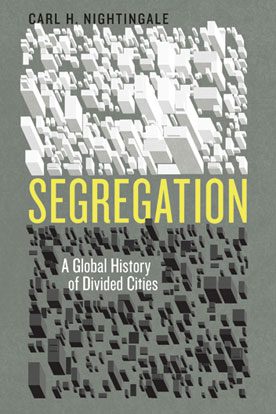Carl Nightingale’s Segregation spans 7,000 years and the nuanced architecture of race-driven real estate practices across six continents. Despite this expansive scope and meticulous attention to detail, Segregation is easy to read and hard to put down, weaving into the narrative both leaders and landscapes that shaped the realty fortunes of urban America, a fractured Europe, and a stratified India.
Nightingale, a professor at the State University of New York Buffalo, opens the narrative in the winter of 1910 with a rallying cry of the Rev. Dr. Ernest Lyon, pastor of Baltimore’s John Wesley Methodist Episcopal Church and an early father of the Civil Rights Movement. Lyon admonished his congregation that the “city fathers” of Baltimore were seeking to deprive free men (my emphasis) of their right to live and own property. After Lyon’s call, the city fathers of Baltimore did exactly what Lyon spoke against: They divided the city into white blocks and black blocks, with bullets and batons and dogs behind them.
Nightingale takes us to turn-of-the-20th-century Chicago, where racial segregation was at times more draconian than it was in South Africa, and where some white segregationists argued for mass deportation or racial extermination. Fanning the paranoia was the Germ Theory of Segregation, which was bolstered by a circa 1900 New York Life Insurance Company “study” that produced “proof” that blacks contracted deadly diseases at a higher rate than whites.
Because the Supreme Court frequently frustrated the attempts of white supremacists to maintain de jure segregation (Buchanan v. Warley [1917] and Euclid v. Amber [1926] for example), white supremacists turned to cloaking their movements to maintain separation. In 1910, segregationists turned to a novel tactic: street theater. White blockbusters developed a scripted “minstrel” show orchestrated on the streets of Chicago. Blockbusters spread lies about plummeting property values due to “black invasion” and followed up with black men paid to stage fights on white street corners. The fights were followed by or alternated with black women pushing strollers down a white block. Blockbusters then disseminated a flurry of flyers and propaganda warning whites to leave the neighborhood. Whites would sell at low prices and the blockbusters would sell high to blacks.
Nightingale shows the plummeting property values in urban America as emerging from white hysteria rather than integration. Once segregationists exhausted that tactic, they tried a host of others — land use zoning, racial restrictions on title deeds, real estate board campaigns, racial steering by real estate agents, and exclusive owners’ societies.
A particularly destructive attack was led in 1918 by the counsel for the National Association of Real Estate Boards (NAREB), who trademarked the term “Realtor” so that only those who upheld segregationist views or permitted particular screening procedures would be able to use it. NAREB created literature that became the industry standard, and which minced no words in saying diversity was against NAREB’s code of ethics.
Before the 1960s, segregationists spent decades undermining federal policies that had been aimed at making race lines more porous. For example, in response to the 1930s real estate crisis, Franklin Delano Roosevelt’s New Deal National Housing Act specifically eschewed racist language or policies. But the act was not resilient against racist implementation. The FHA’s underwriting manual, the so-called “FHA Bible,” and the related neighborhood maps were used by real estate practitioners and politicians to subvert the Housing Act’s promise as it applied to blacks.
In his concluding chapter, Nightingale discusses housing victories that emerged after the Civil Rights Movement, such as Hills v. Gautreaux [1976], the Mortgage Disclosure Act (1976), and the Community Reinvestment Act (1977). But he is clear that serious problems remain, among them gentrification and gated communities, unmet needs for access to good schools and transportation, and a lack of truly integrated communities.
Some of the tactics Nightingale catalogs are well known. Many readers will recognize what happened in Chicago. Others will be familiar with the caste-driven slums of Calcutta. What Nightingale does especially well is make connections between them. A century before “globalization” became a catchword, racist land use strategies crossed the Atlantic and spread — fast.
Racism at its most insidious — being hard-wired into housing contracts and cemented into zoning ordinances — isn’t as easy to capture in a photograph as the more familiar Jim Crow South of the separate water fountain and lunch counter. But it is captured in expert detail in this book.






Comments